Heterodontosaurus, whose name literally means “different toothed lizard,” offers a fascinating glimpse into a distant past. Its unique dental arrangement and other distinctive features make it a subject of great interest in the realm of paleontology.
Heterodontosaurus Key Facts
| Keyword | Fact |
|---|---|
| Pronunciation | HET-er-oh-DONâ T-oh-sore-us |
| Meaning of name | Different Toothed lizard |
| Group | Ornithopod |
| Type Species | Heterodontosaurus tucki |
| Diet | Herbivore |
| When it Lived | 199.3 to 182.7 MYA |
| Period | Early Jurassic |
| Epoch | Sinemurian to the top of the Pliensbachian |
| Length | 3.9 to 5.9 feet |
| Height | Approximately 1.7 feet |
| Weight | 4.4 to 22.0 lbs |
| Mobility | Moved on two legs, or all four |
| First Discovery | 1961 by British–South African expedition |
| Location of first find | South Africa and Lesotho |
| Also found in | Mexico |
| First Described by | 1962 by Alfred Crompton and Alan Charig |
| Holotype | SAM-PK-K337 |
Heterodontosaurus Origins, Taxonomy and Timeline
The name of Heterodontosaurus derived from Greek words meaning ‘different’, ‘tooth’, and ‘lizard’, aptly describes this dinosaur’s most striking feature: its varied dentition. This name not only captures its uniqueness but also hints at its intriguing dietary habits.
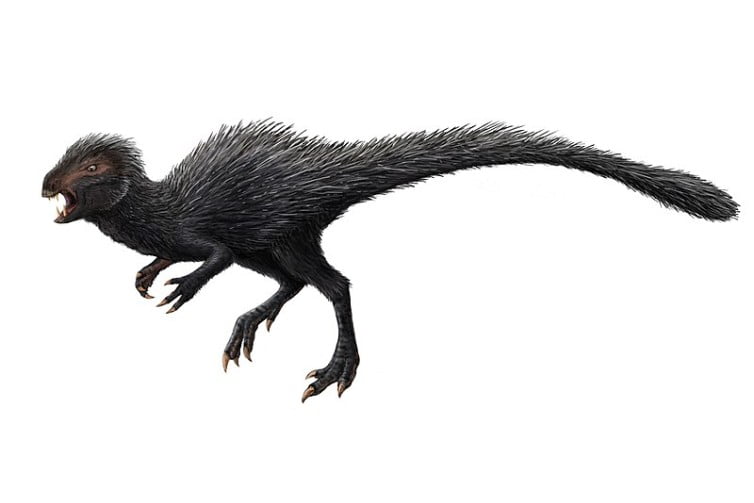
Belonging to the Ornithopod group, Heterodontosaurus is a member of the Heterodontosaurid family. Its type species, Heterodontosaurus tucki, stands as a testament to its distinct lineage within the vast tapestry of dinosaur evolution.
The timeline of Heterodontosaurus spans the Early Jurassic Period, specifically from the Sinemurian to Pliensbachian Epochs. This places it in a time frame of approximately 199.3 to 182.7 million years ago, a period teeming with diverse life forms and significant geological changes.
Discovery & Fossil Evidence
The discovery of Heterodontosaurus tucki, a dinosaur that roamed the Earth during the Early Jurassic, is a tale of exploration and scientific inquiry. The holotype specimen, SAM-PK-K337, was unearthed during a British–South African expedition to South Africa and Lesotho between 1961 and 1962. This significant find occurred on a mountain at an altitude of about 1,890 meters (6,201 feet), in a locality called Tyinindini, in the Eastern Cape Province of South Africa.
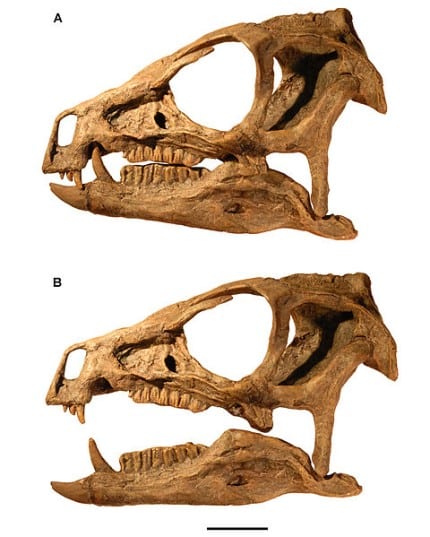
Today, this prized specimen resides in the Iziko South African Museum in Cape Town, serving as a crucial piece of the paleontological puzzle. The specimen comprises a crushed but nearly complete skull. Interestingly, associated postcranial remains mentioned in the original description seemed to have vanished by 2011, adding a layer of mystery to this already fascinating creature.
The animal was scientifically described and named in 1962 by paleontologists Alfred Walter Crompton and Alan Charig, marking a significant milestone in our understanding of this unique dinosaur.
Discovery of second specimen
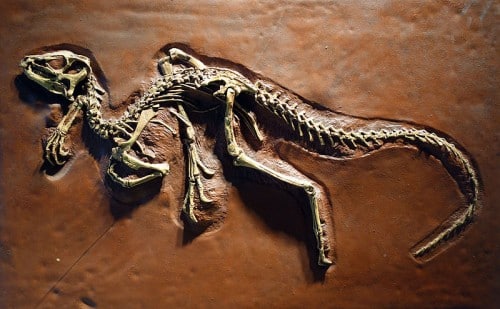
In 1966, a second specimen of Heterodontosaurus (SAM-PK-K1332) was discovered, further enriching our knowledge. This find took place at the Voyizane locality, within the Elliot Formation of the Stormberg Group, at an elevation of 1,770 meters (5,807 feet) above sea level, on Krommespruit Mountain. This specimen was remarkable, including both the skull and skeleton, preserved in articulation. This means the bones were found in their natural position relative to each other, with minimal displacement and distortion. Such a well-preserved specimen provides invaluable insights into the anatomy and life of Heterodontosaurus, offering a more complete picture of this intriguing dinosaur.
Heterodontosaurus Size and Description
Heterodontosaurus, with its unique blend of features, might have resembled a “nimble two-legged porcupine” in life, as suggested by paleontologist Paul Sereno. This vivid description paints a picture of an agile and distinctive creature, possibly covered in quill-like structures. Its varied dentition, including sharp canines and grinding cheek teeth, hints at a specialized diet and a complex feeding strategy.
Size and Weight of Type Species
The most complete skeleton of Heterodontosaurus, known as SAM-PK-K1332, belonged to an individual measuring approximately 3.9 feet in length. Estimates of its weight have varied, with different studies giving estimates between 4.4 lbs to 7.5 lbs. The closure of vertebral sutures in this specimen indicates that it was an adult and likely fully grown.
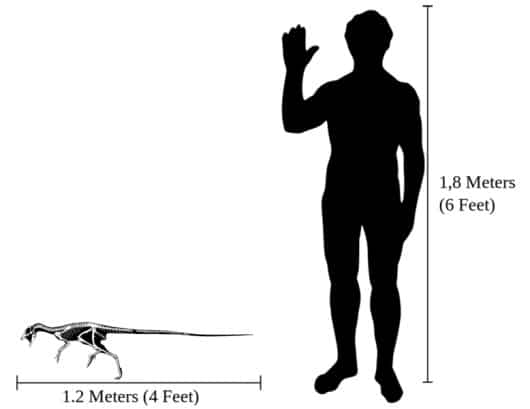
However, another specimen, consisting of an incomplete skull, suggests that Heterodontosaurus could have grown substantially larger. This specimen points to a potential length of up to 5.9 feet, and a body mass nearing 22.0 pounds. The reason behind this size discrepancy is not entirely clear. It might reflect variability within a single species, sexual dimorphism (differences in size or appearance between males and females), or even the possibility of two separate species.
These findings paint a picture of a small yet potentially diverse dinosaur, with variations in size that raise intriguing questions about its biology and behavior. The Heterodontosaurus, with its porcupine-like appearance and varying stature, undoubtedly adds a unique and fascinating chapter to the story of early dinosaurs.
The Dinosaur in Detail
Heterodontosaurus stands out in the dinosaur kingdom for several reasons. Firstly, its dental arrangement is unlike any other, with different types of teeth suggesting a varied diet. This feature not only distinguishes it but also provides clues about its feeding habits and ecological role.
The adaptability of Heterodontosaurus is evident in its potential for bipedal and quadrupedal movement. This versatility in locomotion might have been a key survival trait, allowing it to navigate diverse terrains and escape predators.Notable specimens, including the holotype, have significantly contributed to our understanding of Heterodontosaurus. These fossils offer a window into its anatomy and lifestyle, enriching our knowledge of this unique dinosaur.
The Ultimate Dino Quiz
Do you want to test your knowledge on dinosaurs? Then try this Ultimate Dino Quiz! Don’t worry if you get some of the answers wrong, and look at it as an opportunity to refresh and improve your knowledge!
Don’t forget to try our other games as well!
Interesting Points about Heterodontosaurus
- Heterodontosaurus is an early diverging Ornithischian
- Varied Dentition: Heterodontosaurus had a unique combination of teeth, including sharp canines and grinding cheek teeth, suggesting a specialized and possibly omnivorous diet, which is quite rare for dinosaurs of its time.
- The presence of gastralia, paired sternal bones and sternal ribs allowed Heterodontosaurus to expand its rib cage during breathing cycles, as modern crocodiles do. This feature is not present in more recent dinosaurs.
- Bipedal and Quadrupedal: This dinosaur had the unusual ability to walk both on two legs and on all fours, a versatility that likely gave it an advantage in mobility and foraging.
- Geographical Spread: Initially discovered in South Africa, the presence of Heterodontosaurus fossils in Mexico indicates a wider geographical spread than initially thought, hinting at a broader ecological impact.
- Early Jurassic Pioneer: Living around 199.3 to 182.7 million years ago, Heterodontosaurus was among the early dinosaurs that thrived after the mass extinction at the end of the Triassic period.
- Specimen Significance: The holotype specimen, SAM-PK-K337, is particularly significant as it provides one of the most complete skeletal structures of Heterodontosaurus, offering invaluable insights into its anatomy and lifestyle. Specimen AM 4766, from the Albany Museum in South Africa provided anatomical details of the rib cage, vertebral column and pelvic bones.
Heterodontosaurus in its Natural Habitat
Imagine the world of Heterodontosaurus, a landscape marked by distinct climates and diverse vegetation. This herbivore roamed areas that were likely lush and abundant in plant life, providing ample food sources.
Heterodontosaurus‘s diet consisted of plant matter, as suggested by its varied teeth. Its ability to move on two or four legs hints at a versatile approach to foraging and navigating its environment. While specific details about its social behavior and life expectancy remain elusive, it’s plausible that Heterodontosaurus interacted with other species, either as part of a herd or in a solitary manner.
The impact of Heterodontosaurus on its ecosystem could have been significant, potentially shaping the landscape through its feeding habits and movements. Its senses, while not fully understood, might have played a crucial role in its survival and interactions with the environment.
Contemporary Dinosaurs
In the lush, prehistoric landscapes where the Heterodontosaurus roamed, life was a vibrant tapestry of interactions and survival. Picture this small, agile creature, no larger than a modern turkey, navigating a world where size often dictated the rules. Among its contemporaries, the Lesothosaurus was a notable presence. Similar in size to our main character, these two might have crossed paths in their quest for food, perhaps competing for the succulent plants that carpeted their world. Their interactions, while not the dramatic confrontations of larger beasts, were nonetheless a delicate dance of coexistence and rivalry.
Then there was the Abrictosaurus, slightly larger but part of the same ecosystem. Imagine the Heterodontosaurus, with its distinctive beak and teeth, cautiously eyeing this relative giant. While not direct competitors due to different dietary preferences, their paths undoubtedly intersected, perhaps at a shared watering hole or in a lush fern grove. These encounters, while not overtly hostile, were subtle reminders of the pecking order in their ancient world.
Looming larger in this prehistoric drama was the Massospondylus, a creature that dwarfed our main dinosaur. This long-necked giant, feeding on the higher foliage, was like a living skyscraper compared to the Heterodontosaurus. Yet, in this complex ecosystem, even these giants could impact our protagonist, perhaps by inadvertently stripping an area of lower vegetation or by their sheer presence altering the landscape.
Frequently Asked Questions
The name means “different toothed lizard,” reflecting its unique dental arrangement.
It lived during the Early Jurassic Period, approximately 199.3 to 182.7 million years ago.
It was first discovered in South Africa and Lesotho during a British–South African expedition in 1961–1962.
Heterodontosaurus was a herbivore, primarily feeding on plant matter.
Yes, it had the ability to move on two legs, or all four, suggesting versatility in locomotion.
Its distinct dental arrangement and potential for bipedal and quadrupedal movement set it apart from other dinosaurs.
Sources
The information in this article is based on various sources, drawing on scientific research, fossil evidence, and expert analysis. The aim is to provide a comprehensive and accurate overview of the Heterodontosaurus. However, please be aware that our understanding of dinosaurs and their world is constantly evolving as new discoveries are made.
Gallery
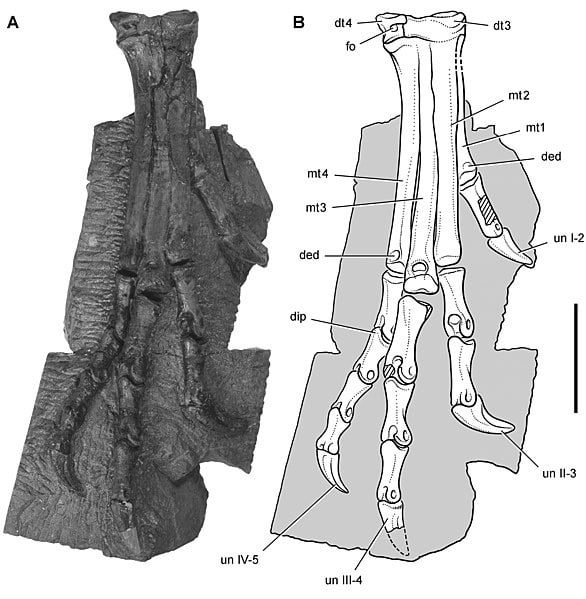 Heterodontosaurus foot
Heterodontosaurus foot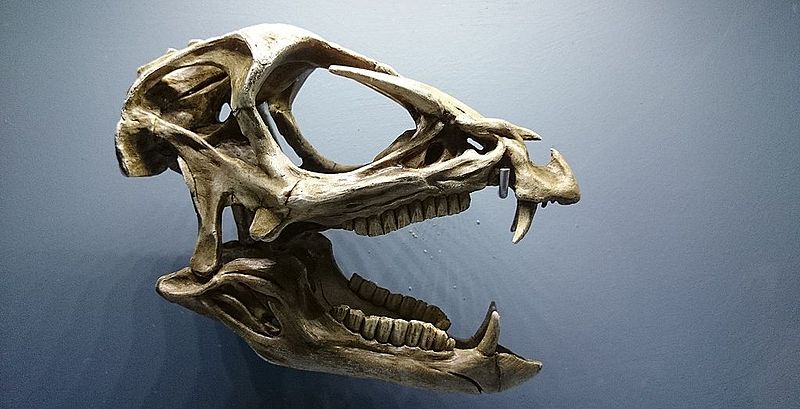 Heterodontosaurus, meaning different toothed reptile, is name after its distinctive and extremely unusual teeth
Heterodontosaurus, meaning different toothed reptile, is name after its distinctive and extremely unusual teeth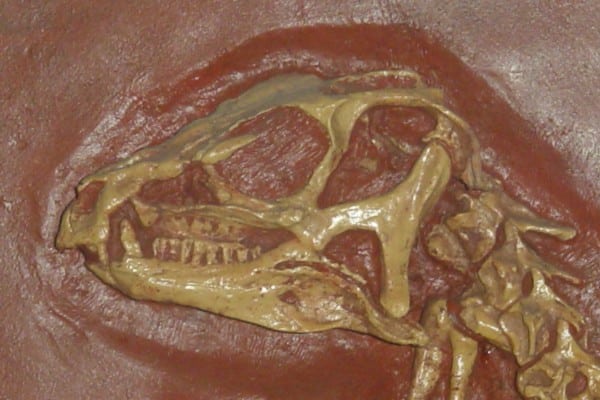 Heterodontosaurus skull
Heterodontosaurus skull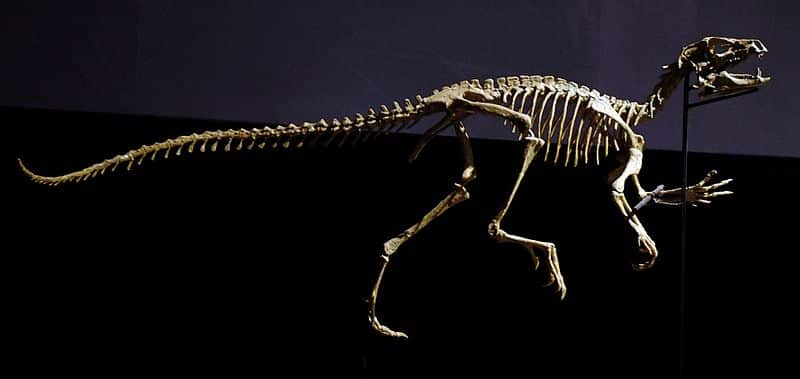 Heterodontosaurus skeleton
Heterodontosaurus skeleton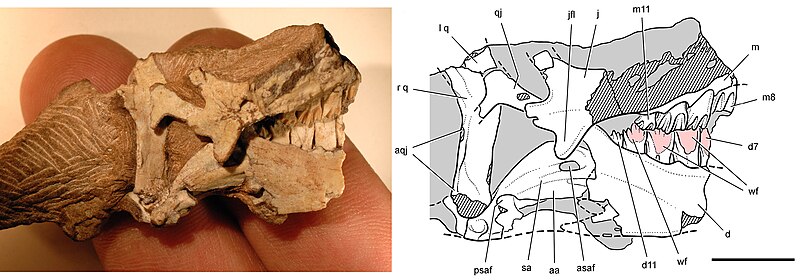 Posterior end of the skull of Heterodontosaurus tucki from from the Lower Jurassic Upper Elliot and Clarens formations of South Africa
Posterior end of the skull of Heterodontosaurus tucki from from the Lower Jurassic Upper Elliot and Clarens formations of South Africa
This article was last fact checked: Joey Arboleda, 11-04-2023
Featured Image Credit: FunkMonk (Michael B. H.), CC BY-SA 3.0, via Wikimedia Commons
